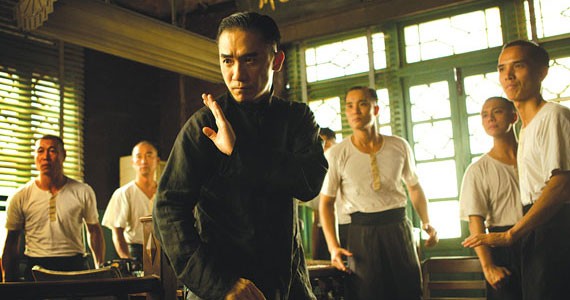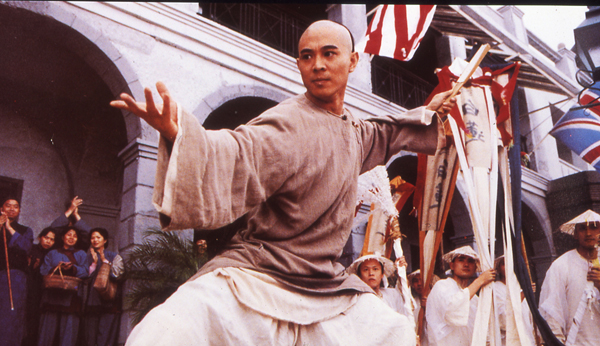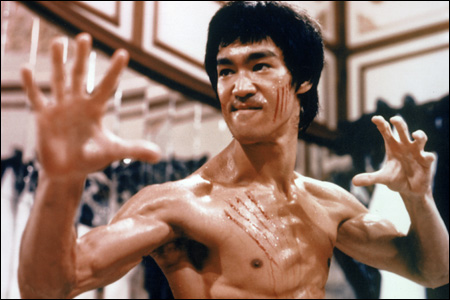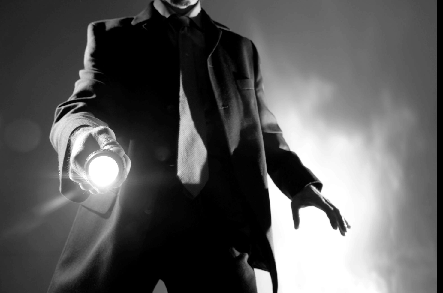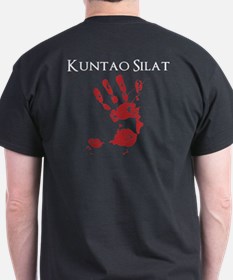The World of Kung-Fu 3.2: Wing Chun
Wing Chun: The Idealistic Revolutionaries
“Heaven save the Ch’ing. I mean it, Han. There is no future and China’s dreaming.
Just one thing, just one thing, just one thing beats Manchu.
More Wing Chun, More Wing Chun, More Wing Chun Kung Fu.”—“Heaven Save the Ch’ing” by “Mr. Ying-Yang Facing Both Ways Gun”, Manchu Dynasty, 19th century.
Wing Chun are the closest thing that the Wulin have to a leadership. They work hard to bring the styles together in cooperation, believing that only then will the forces of good be strong enough to defeat the forces of evil. Wing Chun Kung Fu was originally developed by a collaboration of Shaolin agents and revolutionary leaders, to allow rebels to overthrow Wushu and their Manchu puppets in China. The Manchu were duly overthrown in 1911, but Wushu soon returned to power under the Chinese Communist Party. Tirelessly, Wing Chun continues to fight, unable to rest until the world is free of the Wushu yoke. As the self-appointed defenders of humanity, their mandate has widened to include the fight against crime, especially the Five Venoms, and against anything else that might threaten innocents.
“Everybody have fung [perseverance] tonight. Everybody Wing Chun tonight.”—Revolutionary song, Manchu Dynasty, 18th century.
Wing Chun have a reputation for righteousness, though not to the saintly degree of Shaolin or Wudang. However, Wing Chun also have a practicality and an understanding of the modern world that Shaolin and Wudang don’t. As the best organized style on the side of good, they are best placed to make plans and persuade others to help carry them out. Wing Chun agents are known for being friendly, cooperative, and diplomatic, and for bringing others together. Wing Chun are excellent at conspiring and making plots, but some also have a tendency to erupt into sudden bursts of impulsive action when they get excited. This is a mixed blessing for a leader faction.
Wing Chun classes are easily available in the US, and most of them have connections to Wing Chun as a political organization. Suitable students are politically radicalized and trained in the secrets of the style, to serve as warriors in the Kung Fu War. Of all styles in the Wing Chun faction, it is Wing Chun itself that provides by far most of the “troops”.
Common Professions: Any.
Wing Chun Relations
“Knock-knock-knock-knock-knock-knock…Wing Chun who?”—traditional.
Shaolin: Wing Chun idolizes the Shaolin. They know that the monks are often impractical and unworldly, but they represent everything that is good, kind, honorable, ordered, and traditional in the world. It was the Shaolin who gave them Kung Fu in the first place, and Wing Chun will never forget it.1
Wudang: Wing Chun thinks that the Wudang are wonderful. If the Shoalin represent traditional Buddhism, then Wudang represents traditional Daoism, and Wing Chun has a deep respect for both. Wing Chun’s close relationship with the Shaolin just makes them go out of their way to demonstrate that they also respect and honor Wudang.
Vigilantes: The higher echelons of Wing Chun lineages in China do not the like idea of Wulin collaborating with American Vigilantes, who they see as a dangerous, unpredictable rabble. However, Wing Chun cells who live in the US are often more pragmatic, believing that if Vigilante groups can be civilized, they would make powerful allies in the Kung Fu War. Such sympathetic Wing Chun agents tend to see the Vigilantes as an American version of the many heroic peasant uprisings in Chinese history.
Others: More than any other Wulin faction, Wing Chun cares about putting an end to the Karate Wars, and redirecting Karate’s energy to the Kung Fu War. Likewise, they hope to draw the Circle of Iron into the Kung Fu War. While they disapprove of the Circle’s gladiatorial events, they are more accepting than other Wulin, since they don’t want the issue of underground Kung Fu contests to stand in the way of a military alliance. On the other hand, Wing Chun regards bringing the Infinite Fighting Federation into the Kung Fu War as out of the question.
Wing Chun Allies
Hung Gar
“I AM the law”—Wong Fei-hung, Hung Gar revolutionary, Manchu Dynasty, 1888.
Like Wing Chun, Hung Gar was developed from Shaolin Kung Fu in the 17th century in order to help the people overthrow their Wushu and Manchu oppressors. However, unlike Wing Chun, the monks who helped develop Hung Gar were not acting on orders from the Shaolin hierarchy, and were instead breaking Shaolin rules to help the peasantry.
Hung Gar is much more politically radical than Wing Chung, rejecting not just Wushu authority, but all political authority not based on righteous Kung Fu. To Hung Gar, the ideal state would have no laws or police force. Rather, the weak and vulnerable would be protected by local martial arts heroes. Hung Gar practitioners consequently have little time for the police, government bureaucrats, and laws in general, though they scrupulously respect the rules of righteous martial arts societies. Their attitudes have caused a lot of friction with the other, more traditionally-minded, Wulin. On the other hand, their devotion to destroying Wushu has earned them a grudging respect.
Though Hung Gar is a member of the Wing Chun faction, they are rivals with Wing Chun, and would rather see themselves as faction leaders. After all, Hung Gar’s descent from Shaolin is as direct at Wing Chun’s. What’s more, Hung Gar considers itself tougher than Wing Chin, though ironically, the harsh demands of Hung Gar training prevent it from having the numbers required to challenge Wing Chun for leadership. The rivalry between Hung Gar and Wing Chun dates back to a fight in a Hong Kong fish-market, in which Wing Chun master Ip Man and his student Wong Leung defeated an entire school of Hung Gar fighters, who were out to prove that Ip Man wasn’t so tough.
Q: “Why was Wong Fei-hung defeated?”
A: “Because nature has no tiger-cranes.”—Wudang riddle.
Developed from a fusion of Shaolin Kung Fu with Tiger and Crane styles, Hung Gar practitioners retain an affinity for Tiger and Crane artists, and are burdened with a rivalry with all of Boar, Bull, Horse, Leopard, Lizard, Monkey, Panther, and Toad.
Hung Gar classes are uncommon, but are offered in many American cities. They are careful to keep up appearances and few give any indication, even to most of their own students, of the hotbed of radical political activism that underlies Hung Gar.
Common Professions: Martial arts instructor, journalist, private eye, Robin Hood-style criminal, social worker.
Jeet Kune Do
“When I began to practice Kung Fu, a punch was just a punch. A kick was just a kick. Then on the day I turned twelve, my father sat me down and said ‘Jun-fan, we need to have a conversation about chi.’”—Bruce Lee
Jeet Kune Do began as a breakaway movement from Wing Chun. It was founded by Bruce Lee in 1967 to provide a practical martial art, free of superstition and traditional baggage. This rejection of tradition horrified Wing Chun, but they quickly moved to conciliation, making alliance with Jeet Kune Do by appealing to their sense of justice and heroism in the face of evil. But then in 1973, at the height of his fame, Bruce was arrested by the Shaolin for revealing dangerous secrets about the power of Kung Fu through his films. As far as anyone knows, he has been in the Shaolin prison ever since, though stories abound of his supposed escapes and escapades before being recaptured.
The arrest of Bruce Lee drove a wedge between Jeet Kune Do and the Shaolin. Jeet Kune Do continues to denounce the monks for their highhanded authoritarianism, and tries to undermine their position in the martial arts community. This in turn has alienated Jeet Kune Do from the Wulin in general, and today, many Jeet Kune Do fighters prefer to work with the Vigilantes rather than with Wing Chun. Jeet Kune Do has been particularly active combatting street crime and in striking back at the Maniac Warrior Empire. Their success against the Maniacs has led some Maniacs to start training Jeet Kune Do themselves, a fact not lost on the Shaolin.
Common Professions: Blue collar worker, fire fighter, martial arts instructor, police officer.
Kajukenbo
“The Truth is out there”-- Shinzō Abe, Kajukenbo master, 1954.
Kajukenbo was developed in Hawaii in the 1940’s, as a fusion of Chinese, Japanese, and Korean styles. In 1954, Kajukenbo’s nature changed radically, after Hawaii became the site of an attempted demonic invasion, engineered by the Laughing Devils. Kajukenbo fighters, in conjunction with local Wudang agents, only just prevented the demonic armies from entering our dimension. Since then, Kajukenbo have been convinced that further demonic invasions are immanent. They expect the demons to take the form of evil spirits from Hawaiian, Chinese, Japanese, and other folklore. Regarded by many as conspiracy theorists, the stylists often turn to paranormal investigation or monster hunting, the better to protect humanity. They despise the Laughing Devils above all, and pursue them relentlessly when they can find them. Kajukenbo is something of an outsider in Wing Chun politics. They are always reliable when called on, but their non-Chinese origins bring cultural complications that set them apart. Like most styles with Japanese roots, Kajukenbo badly wants to see an end to the Karate Wars.
Kajukenbo classes are uncommon though available in the mainland US, but being Trained by a Master usually requires moving to Hawaii. Some masters take on students to further the Kung Fu war, but others will train anyone for money.
Common professions: Journalist, Paranormal Investigator, Scholar.
Kuntao
“There is a world of Kung Fu outside China. And one day that world is going to join in our Kung Fu War, on one side or another. Whichever side it joins, wins”—Xu Bing, Kuntao master, 1959.
Kuntao is an umbrella term for the local styles of the ethnic Chinese in Indonesia and Malaysia. Kuntao has been impressed by local non-Chinese styles like Pentjak Silat, and has been working to bring other South-East Asian and Indochinese styles into alliance with the Wing Chun faction. As part of this process, they want to deemphasize Chinese tradition in the rules and practices of Wing Chun faction, an idea that horrifies traditionalists. Kuntao agents are often vocal about the power of these non-Chinese styles and about what they might have to offer if they could be drawn formally into the Kung Fu War. In the US, Kuntao does its best to network with practitioners of non-Chinese styles, to convince them to make alliance. Kuntao classes are difficult to find in the US, and being Trained by a Master almost always requires moving to Indonesia or Malaysia.
Common Professions: Any.
A Variety of Chinese Revolutionary Kung Fu Societies
Associated groups include: Blue Shirt Society, Choi Gar, Choi Li Fut, Crippled Avengers, Eight Shadows Fist, Ghee Hin Kongsi, Hak Fu Mun, Hatchet Gang, Lao Gar, Magnificent Butchers, Three Harmonies Society, Tongmenghui, Mok Gar, and White Lotus.
Miscellaneous Chinese Martial Artists
If a martial artist in China, regardless of their style, wants to join the fight against evil, they know that Wing Chun is always looking for new allies and agents. A master of any Chinese style, including the numerous animal styles, could wind up on the Streets of the US as a Wing Chun agent. See the Independent Animal Styles in the section Guys in the Middle for examples.
Wing Chun as Villains
When Wing Chun fighters go bad, they usually go bad as a school. For as long as there have been Wing Chun kwoon, there has been a temptation to turn the students into a gang and make serious money. Historically, some schools shook down the communities they were pledged to protect, some opened gambling houses or brothels, and some turned traitor entirely and sold out to Wushu. When villainous Wing Chun fighters are encountered in the US, they are likely to be part of a villainous Wing Chun organization that might be anything from a criminal cartel to a counter-revolutionary army. Villainous Wing Chun schools often have a long history, bringing with it a litany of feuds and grudges against other Wing Chun schools, good and evil. Known evil Wing Chun schools include the Red Eyebrows and White Eyebrows (both serving Wushu), and the Heaven Legs School (a criminal gang allied with the Five Venoms).
Hung Gar, Jeet Kune Do, Kajukenbo and Kuntao fighters are more likely to sell out as individuals than as whole schools. There is always easy money for them in taking mercenary work or joining criminal martial arts gangs.
Footnotes
1. It was said to be the Wing Chun master Bao Dílún (1850-1970) who wrote the poem “Known to the Shaolin”.
How many roads can a man fight down without breaking out of Horse Stance?
How do you leg sweep a whole gang of thugs lined up in a centipede dance?
How can a monk stretch his legs round his neck without ever ripping his pants?
The answer my friend, is known to the Shaolin. The answer is known to the Shaolin.
How can a Crane beat Tiger Style when a tiger would just eat a crane?
How can you tell an Enlightened One from someone who’s just gone insane?
Yes and how can a man head-butt a wall, again and again and again?
The answer my friend, is known to the Shaolin. For the answer, you have to join Shaolin.
